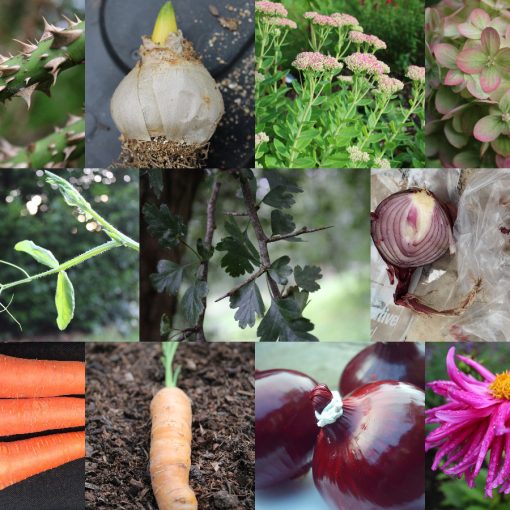New Syllabus, Unit 2 Topic 4 Biodiversity Element 3 Creating Habitats. Learning outcome; Habitat corridors.
Habitat corridors
Wildlife or habitat corridors are any linear feature in the landscape which connect habitats. Habitat corridors are a way of connecting isolated spaces so that animals can move from one area to another. They can provide food on the journey as well as cover and protection from predators. Fragmentation of habitat caused by loss of wildflower meadows, urbanisation and changes in land management, prevents access to enough food and water as spaces are isolated. The following are examples of wildlife or habitat corridors: hedgerows, avenues of trees, streams and rivers, railway tracks and gardens in urban spaces.
When animals are restricted to a smaller space they must travel further to forage when the food runs out in that habitat. Movement may be prevented for ground dwelling creatures such as hedgehogs. For flying and buzzing creatures much energy is used to travel to another habitat to forage.
How can garden design and maintenance allow freedom of movement and foraging?
- Connecting gardens.
Roads and secure garden fencing stops hedgehogs in their tracks. Hedgehog charities recommend making 13 by 13 cm holes at the base of fences and walls which create hedgehog highways, allowing hedgehogs to roam extensively.
This film describes how and why:
- Mixed native hedging
Animals are more at risk of predation when they move between habitats. A mouse can travel along the hedge hidden from an owl for example. Hedgerows are useful wildlife corridors on agricultural land and in gardens. Mixed native hedging (Prunus spinosa, Crateagus monogyna, Corylus avellana) provides cover and food for travelling creatures such as mice, hedgehogs and shrews. In gardens the value of hedges can be further increased by:
Maintaining an ‘A’ shape so that the hedge is wider at the base providing a wider corridor, allowing grass or a few nettles to grow next to the base of the hedge and growing additional climbers such as Lonicera periclymenum (Honeysuckle) through the hedge which provide nectar and berries.
Linear vegetation such as hedges are often used by bats as a navigation guide to help them find their way between roost and foraging areas. They fly along the base of the hedge which provides shelter and helps them find their way home. In urbans spaces, light pollution can be extremely disturbing to bats. They will avoid foraging in lit areas, will emerge later from roosts to forage so are not feeding for as long and can become entombed in their roost because they will not leave. Light pollution can be reduced by switching off exterior lights at night, focusing security lights more precisely, choosing bulbs with lower light intensity and avoiding placing outside lights on white walls, where their effect is magnified. Simply closing curtains at night also makes a difference.

Figure 1. This bat was found in a torpid state in our hallway but did not show any signs of injury. We placed him outside on a bench and placed a lightweight piece of cardboard over him as recommended on a bat website. Later on he had disappeared so hopefully he returned to the roost.
- Connecting tree canopies
Habitat corridors can be at ground level or in canopies. Avenues of trees and woodlands provide linked canopies.

Figure 2. An avenue of Tilia cordata (Limes) provides an elevated wildlife corridor.
- Access for foraging Pollinators
Since 1940, 97% of ecologically valuable meadowland has been lost due to changing agricultural practices and urbanisation. Urbanisation (railway lines, roads and new housing estates) means that pockets of nectar rich grassland meadows become isolated as well as being reduced, meaning that bees and other pollinators such as beetles and butterflies, have to travel further and expend more energy when foraging. The national pollinator strategy (2014)[1] encourages people to take action in their gardens, allotments, window boxes and balconies to make these spaces more pollinator friendly. Grass verges, roundabouts, spaces managed by Britain In Bloom volunteers, land owned by social housing groups and local authorities (roadside verges) can all be managed to provide habitat and forage for pollinators and as these areas expand they will also join together to create wildlife / habitat corridors.
Initiatives to connect foraging areas for pollinators:
Coronation Meadows
http://coronationmeadows.org.uk/
This project aims to create a new meadow in every county in the UK and so far has created 90 meadows covering an area of 1000 acres. Gardens are also an important contributor to joining up isolated foraging spaces for pollinators and advice on how to create a mini wildflower meadow in gardens is given here.[2]
Buglife B-Lines
Buglife talks about ‘B-Lines’ which is an initiative to link together isolated areas of forage habitat. They liken the fragmentation of habitat to humans being unable to travel if railway lines and roads were removed and refer to a report by the intergovernmental panel on climate change 2007 which predicts that 40-70% of species could go extinct if action is not taken to enable species to move through the landscape. This video describes the project:
Organisations and individuals are encouraged to register their B-line project on a map of the UK so that coverage and how areas link together can be assessed and reviewed.
No-mow May is a popular initiative set up by the organisation, Plantlife.[3]
- Ponds
Water is also an important habitat which attracts a wide range of diverse flora and fauna not found elsewhere. In urban spaces garden ponds can be very beneficial as not only a water source but as a way of connecting gardens together so that amphibians can move between spaces. Frogs and toads can squeeze through very small spaces so usually find their way into your garden but small gaps in the boundary wall or fence will help.
[1] https://assets.publishing.service.gov.uk/government/uploads/system/uploads/attachment_data/file/794706/national-pollinator-strategy.pdf
[2] https://plantlife.love-wildflowers.org.uk/wildflower_garden/how_to_grow_a_wildflower_meadow/
[3] https://www.plantlife.org.uk/uk/discover-wild-plants-nature/no-mow-may



